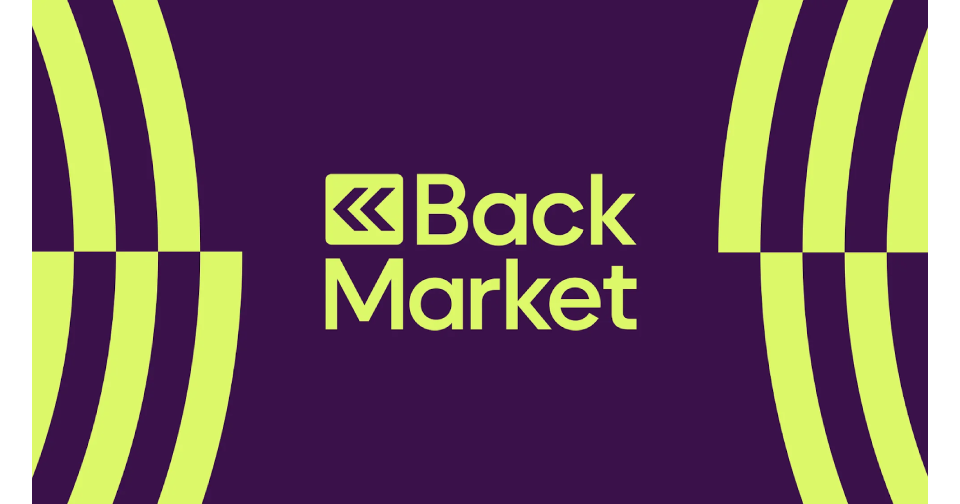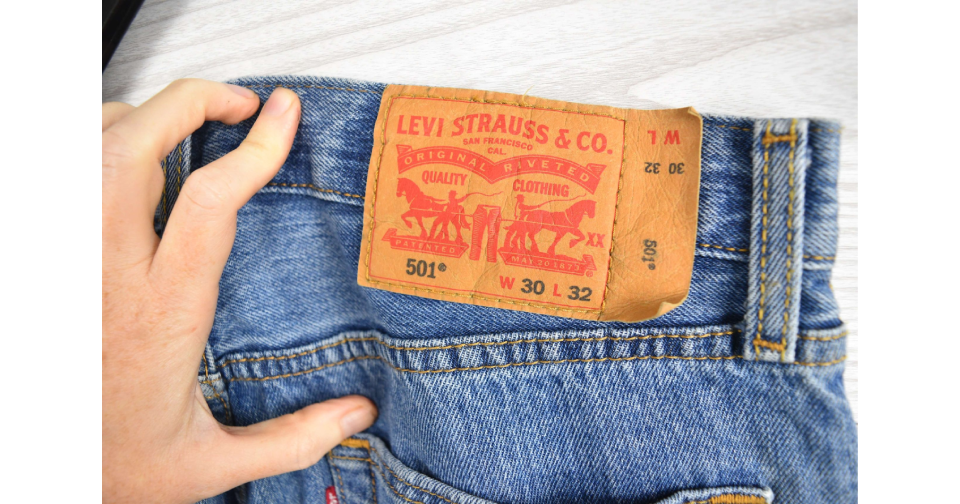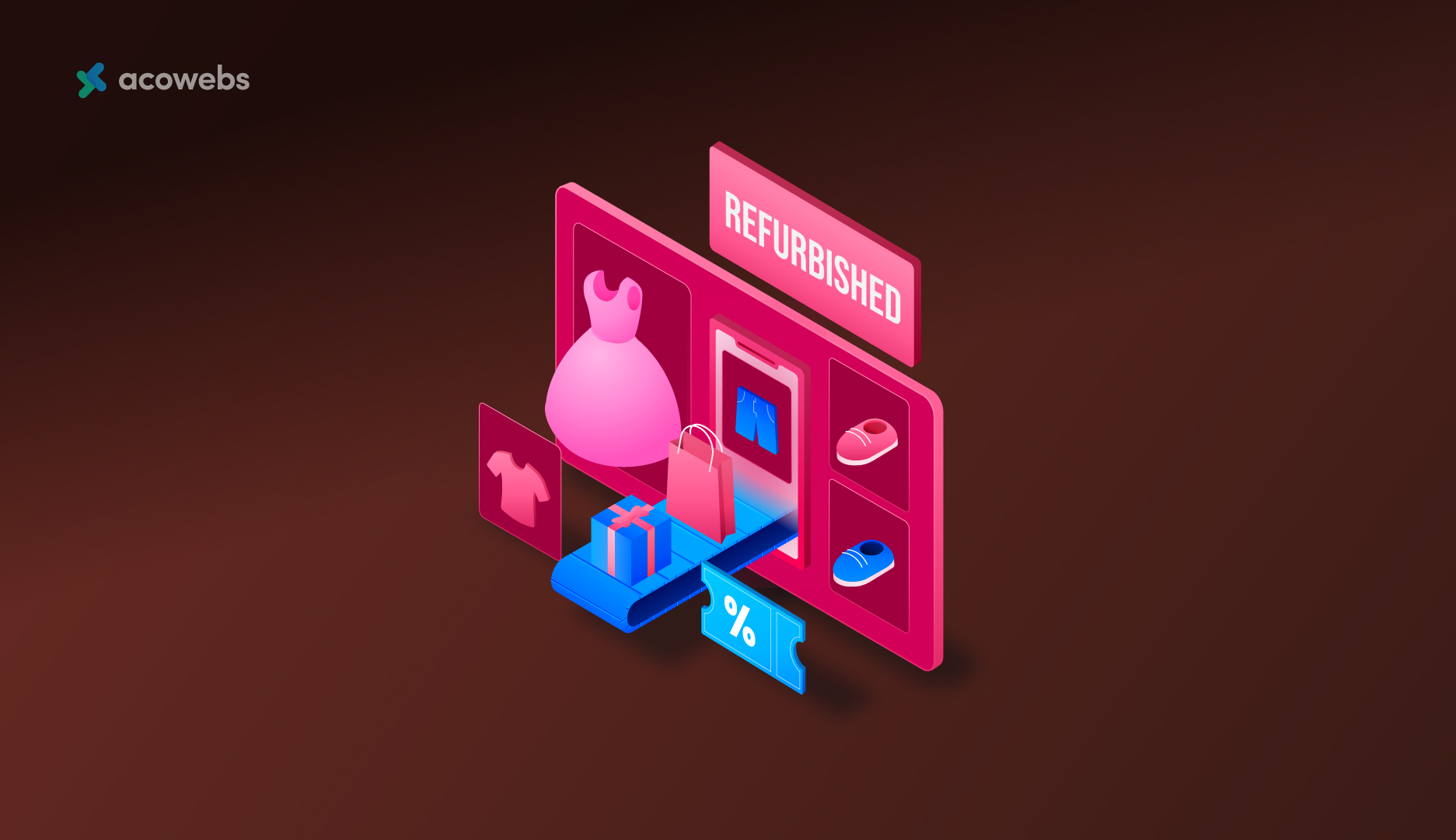Consumer behaviour has undergone a significant transformation over the last 10 years. Increasing awareness about climate change and the emergence of digital platforms have fueled the growth of the re-commerce economy.
This rapidly growing sector combines sustainability with convenience, as companies can both purchase and sell second-hand and refurbished products over the internet. To save money and make more eco-friendly choices, more consumers are now moving toward luxury handbags, vintage furniture, refurbished smartphones, and other pre-owned goods.
Long relegated to thrift stores and classified ads, re-commerce is now a billion-dollar industry. Now, major brands and tech-savvy start-ups are jumping in, noting the growing interest in sustainable, budget-friendly shopping options.
Through this growing trend, the future of retail is being rewritten, with opportunities available to businesses and consumers alike.
Understanding Re-commerce
Re-commerce is the online sale of second-hand, refurbished, or pre-loved items. What sets it apart from the traditional secondhand market is its tech-sleek delivery: sleek digital platforms, AI-powered pricing tools, robust buyer protection systems, and even white-glove authentication services.
The trend gained momentum in the early 2010s as environmental awareness and minimalism became a part of pop culture fashion. Brands and new businesses noticed that young consumers wanted not just something new, but something smart, eco-friendly, and with a story, fueling growth in second-hand and refurbished online shopping markets.
Companies like The RealReal, Back Market, and ThredUp are repositioning secondhand shopping as not only honest but also aspirational and stylish.
The global resale clothing market reached a value of $25 billion in 2024 and is projected to rise to $45 billion by 2029. This expansion also highlights the growing demand for second-hand fashion as consumers seek affordable, sustainable, and unique fashion choices within a circular economy.
The Rise of Second-Hand Online Shopping
Second-hand no longer means second-rate. With streamlined user interfaces, curated inventories, and social integrations, today’s second-hand online shopping marketplaces rival primary retail.
Digital Platforms Reimagining Used GoodsFrom fashion to furniture, tech to toys, niche and general platforms have emerged to serve diverse needs:
- Depop and Poshmark are Gen Z favorites mixing social media with shopping, where sellers “style” their listings and buyers follow influencers for thrift inspiration in second-hand online shopping.
- eBay, which has leaned into authenticity programs for sneakers, watches, and luxury goods to build buyer confidence.
- Facebook Marketplace and OfferUp are popular for local, peer-to-peer exchanges powered by community trust and fast communication.

These platforms not only facilitate transactions, but they also build communities. Sellers are often storytellers, sharing why they’re letting go of an item. Buyers, in turn, feel they’re participating in something personal, sustainable, and smart.
1. Sustainability and Circular Economy
Sustainability is the driving motivation behind re-commerce, which encourages people to consume less and reuse more. Rather than throwing things away, people are now deciding to show products a little love, fixing them, reselling, and recycling them.
Such an approach curtails the need for new production, which has the effect of conserving resources and minimizing waste and pollution. Re-commerce is not just about buying secondhand; it’s a larger commitment to a more conscious way of living.
This is what many younger consumers are gravitating towards, seeking platforms that reflect their value system and offer a different option than fast fashion and throwaway culture.
2. The Refurbished Market: Trust and Tech
The refurbished online shopping market plays a significant role in re-commerce, particularly for electronics and appliances. Refurbished items are not just second-hand, they’ve been restored, thoroughly checked, and tested, and are in good functional condition.
This is frequently done by the initial brand or a reputable third-party service and adds credibility. For customers, it’s an opportunity to buy high-end tech at a lower cost without sacrificing performance. It also minimises electronic waste, making it both a smarter and more sustainable choice for people looking for value and reliability.
3. Building Consumer Confidence
The major challenge for refurbished goods has always been trust. Consumers worry: Will it work? Is it genuine? What if it breaks? Platforms and brands have responded by investing heavily in certification and warranties.
- Apple Certified Refurbished offers a like-new experience with official parts and full warranties.

- Back Market boasts a 30-point quality check and standardized seller performance ratings.
- Amazon Renewed includes a 90-day to 1-year guarantee on refurbished electronics and tools.
These systems use AI-driven diagnostics, parts tracking, and customer review algorithms to build trust at scale. Combined with lower prices and sustainable appeal, the refurbished segment is rapidly becoming the preferred alternative for budget-conscious, eco-aware shoppers.
4. Big Brands Are Entering the Chat
Brands that once feared cannibalizing their own sales are now launching official resale programs. Examples include:
- Patagonia’s Worn Wear, where customers trade in old gear for store credit.
- Lululemon Like New, a curated collection of pre-worn activewear cleaned and resold online.
- IKEA As-Is Online, extending its commitment to affordability and sustainability by reselling returned or gently used furniture.
These initiatives not only extend product life cycles, they deepen brand loyalty and show a company’s commitment to responsible production.
The Benefits of Re-commerce for Consumers and Brands
Why is re-commerce catching fire across industries and age groups? The answer lies in its ability to solve multiple problems at once. The benefits include:
1. Affordable Access to Premium Goods
Affordability is one of the most direct and realistic benefits of re-commerce to the consumer. Re-commerce business models sell premium, high-quality goods at substantially lower prices, usually between 30-70% off retail.
This democratization makes goods that were previously aspirational accessible to middle-income or budget-conscious consumers.
Take Back Market is one of the most well-known online markets for refurbished electronics. A refurbished MacBook Pro could sell on its platform at $950 as opposed to $1,500 or more on a new one, and yet have similar performance specifications and warranty coverage.

The same can be said about other high-ticket items: designer handbags by Gucci or Chanel could be spotted hundreds of dollars cheaper on resale websites such as The RealReal or Vestiaire Collective. Companies like Rebag also buy back their products, helping to ensure a circular consumption model.
Gen Z and Millennials, in particular, are drawn to this model, valuing it while also seeking access to high-quality experiences and products. Rather than choosing between quality and affordability, re-commerce enables them to have both.
2. Brands’ Inventory and Waste Reduction
Re-commerce is an opportunity and a strategic way to address the long-standing challenge of excess inventory and returns that brands and retailers face.
In the conventional retail business, surplus products, whether resulting from overproduction, seasonal shifts, or customer returns, are frequently sold through liquidation avenues.
This can be done at a considerable loss, or, even worse, in landfills. Both will decrease the profits and destroy the brand equity. Re-commerce reverses that dynamic by allowing brands to refurbish, repackage, and resell those products either directly or via specialist partners.
Electronics producer HP, meanwhile, operates its own HP Renew Program, which sells professionally refurbished laptops and desktops with full warranties, and uses returns and overstocks as a new revenue stream.
This also promotes greener practices in the supply chain. Instead of unsold items being wasted, re-commerce enables brands to give goods a second life.
It also generates valuable data on which products are frequently returned, how consumers interact with refurbished items, and which models retain their value over time, data that can inform future production, marketing, and design decisions.
3. Eco-Credibility and Brand Trust
Green consumers are becoming increasingly aware of the environmental impact of the products they purchase. Re-commerce provides an easy, effective solution to companies looking to fulfill this demand.
With the introduction of refurbished or second-hand products, companies can demonstrate their environmental responsibility without having to overhaul their operations.
An example is Apple, which has a strong Certified Refurbished program in which returned items undergo numerous tests and are resold with a one-year warranty. This not only minimises e-waste but also reinforces Apple’s reputation as a responsible and progressive brand.
Similarly, fashion resellers such as Patagonia and Eileen Fisher have integrated re-commerce into their operations. Patagonia has a Worn Wear program where customers trade in their used equipment and get credit that the company cleans, repairs, and resells.
This program enhances the eco-credibility of Patagonia, aligning with its values, targets environmentally minded consumers, and boosts customer participation.
In an era of marketing where authenticity and transparency are key aspects, re-commerce offers a valuable means by which brands can display their values and further establish trust with consumers.
4. Greater Customer Loyalty and Retention
Re-commerce is not merely the sale of used items, but rather the establishment of new channels of interaction. When a brand introduces a buy-back scheme, a trade-in value offer, or loyalty credits for used products, it establishes an endless cycle of contact with its buyers.
Consider the SecondHand program launched by Levi, which encourages customers to bring back their used jeans and receive store credit. The returned denim gets cleaned and then resold on a special e-commerce site.

Not only does this increase the life cycle of the Levi products, but it also unwittingly brings a customer back to make another purchase, thereby effectively forming a circle of loyalty.
These programs transform intermittent purchasers into brand supporters. This can be achieved through discounts, credits, or special offers, which provide value in exchange for used items; companies can build emotional ties that extend beyond the initial purchase.
5. New Revenue Streams and Market Segments
Re-commerce unlocks new revenue opportunities by allowing brands to tap into previously underrepresented or price-sensitive consumer segments. Not everyone is willing or able to pay full price for new products, but many are open to refurbished or gently used options, especially when these come with guarantees or certifications.
Luxury brands have historically been hesitant to enter the second-hand market due to fears of brand dilution. However, platforms like Farfetch’s Pre-Owned and Net-a-Porter’s resale collaboration with Reflaunt show that even high-end fashion labels are beginning to embrace re-commerce.
By partnering with established resale platforms or launching in-house initiatives, these brands can maintain control over product presentation and pricing while expanding their reach to new customers.
Additionally, this model supports circular revenue, where products are sold, returned, and resold often multiple times without the need for additional manufacturing. This can significantly reduce costs and increase margins over the long term.
6. Enhanced Brand Storytelling and Marketing
Re-commerce also opens up new storytelling opportunities, allowing brands to position themselves as leaders in innovation, sustainability, and social good. These narratives are becoming increasingly important in marketing, especially when targeting younger, socially conscious demographics.
For example, IKEA’s Buy Back & Resell program encourages customers to return used furniture in exchange for store credit. Not only does this align with IKEA’s commitment to sustainability, but it also fuels compelling content across social media, newsletters, and advertising campaigns.
The initiative portrays a brand that is not only practical and affordable but also responsible and forward-thinking. Such storytelling resonates with modern consumers who are no longer just buying products, they’re buying into brand missions.
In an era where values drive decisions, participating in re-commerce provides brands with the moral capital and media-worthy moments necessary to stand out.
Challenges and Ethical Considerations
As promising as re-commerce is, it raises some logistical and ethical concerns that industry players must address to maintain momentum.
1. Quality Assurance and Transparency
Maintaining the quality of products in re-commerce is challenging. The condition of items can differ drastically, which is why sellers must be honest in their descriptions, and platforms should introduce a unified grading system.
Inaccurate listings or unreliable comparisons can lead to customer dissatisfaction and a loss of trust. Platforms should invest in quality control mechanisms, transparency, and responsive customer support to resolve disputes and maintain credibility in the long term.
2. Labor and Logistics
Re-commerce is also labor-intensive, as each item needs to be inspected, cleaned, photographed, and listed separately. Second-hand goods also require individual processing, unlike in traditional retail businesses, where bulk deliveries facilitate efficient distribution.
Reverse logistics networks, AI-powered sorting systems, and specialised warehouses are other elements that companies require to operate at scale.
In the absence of technological advancements and lean processing, profit margins could be eroded; thus, operational efficiency is an essential ingredient for sustaining long-term sustainability in the industry.
3. The Digital Inequality and Access
As re-commerce prospers digitally, it is not a level playing field for participation. Even simple obstacles, such as slow internet connections or low digital literacy rates, and the absence of payment infrastructure in some areas, can isolate entire towns.
The mobile-first approach, as well as alternative payment methods and outreach education, are practices that brands should invest in to create an inclusive circular economy. The sustainable development of re-commerce depends on equitable access to it on socioeconomic and geographic grounds.
4. Fake and False Listing
Designer handbags and electronics are very susceptible to counterfeiting, especially in the re-commerce sector. Sellers may use loopholes in the platform and defraud buyers, reducing trust.
To avoid that, platforms are to implement state-of-the-art authentication technologies, hire specialized reviewers, and cooperate with original brands.
Refund and guarantee buyer protection policies are also important. To ensure customer confidence and industry credibility, a safe and transparent marketplace is essential.
5. Data Privacy and Security
As re-commerce platforms collect a growing amount of user data from purchase histories to payment details and personal information, safeguarding this data becomes increasingly critical. Many re-commerce platforms are not yet mature enough in their cybersecurity practices, making them vulnerable to data breaches and misuse of customer information.
Moreover, third-party sellers may attempt to access or misuse sensitive data, intentionally or unintentionally. Ensuring compliance with data protection regulations (such as GDPR or CCPA), investing in secure infrastructure, and being transparent about data usage are essential steps toward maintaining consumer trust and ethical responsibility in the digital age.
The Future of Re-commerce
As online resale becomes increasingly normalized, re-commerce is set to redefine how we think about ownership, value, and consumer identity.
1. Integration with AI and Personalization
AI is already being used to predict optimal resale pricing, detect counterfeit goods, and personalize recommendations. Soon, expect AI avatars much like in synthetic storefronts to guide shoppers through second-hand collections, suggest styles based on past purchases, or even offer eco-scores for each product.
2. Rise of Resale-as-a-Service (RaaS)
Tech startups now offer white-label re-commerce solutions for traditional brands. Companies like Trove and Reflaunt help retailers launch in-house resale programs, handling everything from tech infrastructure to reverse logistics. This model is likely to expand as more brands aim to join the circular economy without having to start from scratch.
3. Cultural Shifts Toward Sustainable Prestige
Second-hand is no longer stigmatized, it’s celebrated. Celebrities, influencers, and sustainability advocates are helping rebrand used goods as ethical luxury. This cultural reframing will be key to converting older or more skeptical demographics over time.
Conclusion
Re-commerce is reshaping retail by merging sustainability with smart technology. What began as second-hand selling has evolved into a thriving, tech-driven ecosystem that appeals to modern consumers seeking affordability, environmental responsibility, and authenticity.
As brands and platforms adopt this model, they must also address challenges such as quality control, digital access, data security, and logistics. With the integration of AI, reverse logistics, and shifting cultural attitudes, re-commerce is becoming a mainstream, value-rich alternative to traditional retail.
By promoting circular consumption and responsible ownership, it offers both economic and environmental benefits. Re-commerce isn’t just a trend, it’s the future of conscious, connected, and inclusive commerce.
Acowebs are the developer of the WordPress offload media plugin which allows you to offload your media to cloud storage such as Amazon s3, Cloudflare r3, Google Cloud, Digital Ocean and more. Media cloud wordpress also helps to sync your media to cloud storage in 1 click and woocommerce email customizer using which you can easily build and customize WooCommerce emails with a drag-and-drop user interface.












 Login
Login
 Cart
Cart







